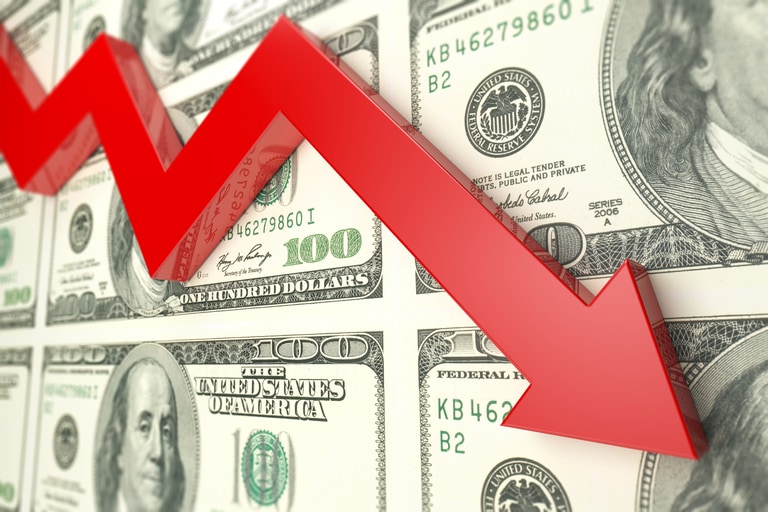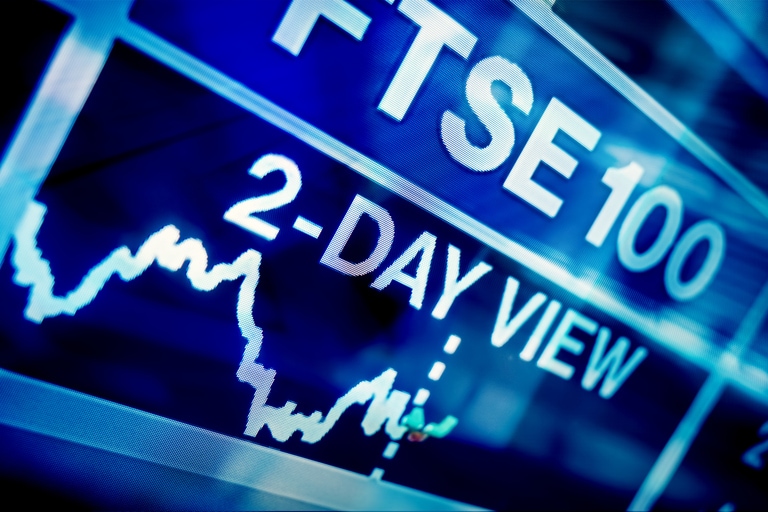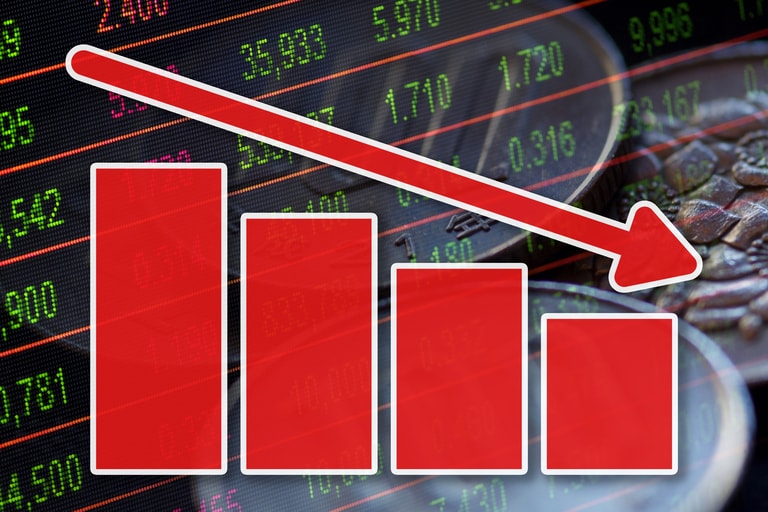The FTSE 100 has continued to make fresh four-year highs today, with the 2018 record highs at 7,903 coming into focus as the next target.
Europe
The last two weeks have been a stark contrast to the negativity in December with both the FTSE 100 and FTSE 250 up over 5% year to date, while the DAX has put on 8%. A combination of falling prices, warmer weather, and better-than-expected trading statements from a host of companies, after the widespread pessimism that characterised a lot of the narrative in the lead up to Christmas, is driving this early year optimism.
The upside surprise to today’s November GDP numbers has also helped, and even when factoring in the strikes and other disruptions facing the UK economy, we look set to avoid some of the worst-case scenarios when it comes to a recession at the back end of 2022. Travel has been a big outperformer so far year to date, with today’s November GDP numbers showing a 3.7% rise in economic activity in the travel and leisure sector. This pickup in activity appears to have helped drive a big rebound in the travel sector and airlines, with the share price of Wizz Air up 50% in the last two weeks, easyJet up over 30%, and TUI and British Airways owner IAG up over 25%.
Today’s best performers include ITV, whose shares have undergone a decent rally in the last couple of days, with today’s announcement that ITVX, its revamped streaming service, delivered a 55% increase in viewing in December, as well as a 65% increase in online users. Much of this can be attributed to the football World Cup, which helped boost its numbers and means it’s still early days, but it’s a good start with the key test being as to whether this can be maintained.
US
US markets appear to be undergoing a post CPI hangover today, opening lower as US banks come under pressure as they paint a cautious outlook for the next financial year, although as we head into the European close, we are rebounding from the lows of the day.
Today’s final quarter numbers have been a bit of a mixed bag for the likes of Bank of America, JPMorgan, Wells Fargo and Citigroup, the shares of which have all drifted lower on the open.
Starting with Bank of America Q4 revenues came in at $24.5bn an increase of 11%, while profits came in at $0.85c a share, or $7.1bn. Higher rates delivered a 29% rise in net interest income to $14.7bn. On trading the bank managed to deliver a better performance with FICC seeing $2.34bn, comfortably beating expectations of $1.93bn, while trading revenue came in at $3.72bn, also beating forecasts of $3.31bn. Wealth management also had a record quarter with $5.4bn. In a sign that the bank was concerned over the prospect of credit losses, we saw another provision of $1.1bn, with a net reserve build of $403m.
JPMorgan Chase also reported its Q4 numbers and on the headline number we saw a beat at $35.57bn, while profits came in at $3.57c a share, or $11bn. Digging into the details, investment banking and FICC and sales trading came in below expectations at $1.39bn and $3.74bn respectively, while equities also came in light at $1.93bn, against a forecast of $1.98bn. Higher interest rates have helped boost net interest income by 48% to $20.3bn, and it is here where we’ve seen the real revenue and profit gains. The bank also set aside a rather large reserve build of $1.4bn, as a result of a big increase in credit costs to $2.3bn on the back of a deterioration in the economic outlook, with the bank saying that they have a baseline assumption of a mild recession. On the outlook JPMorgan was downbeat saying it expects to make $73bn in net interest income in 2023, below expectations of $74.4bn.
Wells Fargo, which is very much a domestically focussed bank has delivered a rather disappointing set of numbers, however this was largely expected. Q4 revenues fell short at $19.66bn, while incurring losses of $3.3bn during the quarter, which is related to various legacy issues around litigation and regulatory issues. On the business itself profits came in at $0.67c a share, or $2.86bn. Net interest income was solid, up 11% on the quarter and up 45% from the same period last year to $13.4bn. On home lending, one of the bank's core businesses, this was lower by 57% due to higher interest rates, and a more challenging housing market. On the outlook there is evidence of a worsening outlook on consumer credit, as delinquency rates start to edge higher, while write-offs rising to $525m. Across the whole business the company added a total of $957m in respect of additional provisions. Operating costs also rose to $16.2bn.
Citigroup rounded off a busy day for US banks with their Q4 numbers, as revenues came in above expectations, rising 6% to $18bn, although profits came in short at $1.16c a share, below an expected $1.30c a share, and a 21% decline from a year ago. FICC was better than expected at $3.16bn, but that was overshadowed by steep falls in equities trading revenue which fell back by 22% from Q3 to $789m. Investment banking was also disappointing, down 58% from a year ago at $645m. In line with its peers Citigroup added another $640m to its reserves, as the bank booked $1.18bn in loan losses during the quarter.
Tesla shares are also lower after announcing price cuts of 20% to its Model 3 and Model Y SUV in Europe as well as the US, following on from similar reductions in its China markets. These reductions are likely to pose problems for the company’s margins, as well as future profitability, with the recent lows near $100 the next key support.
Delta Airlines shares have slipped back after the airline downgraded its Q1 profit forecasts on the back of higher-than-expected operating costs. Q4 profits and revenues on the other hand were better than expected, however today’s weakness also needs to be put in the context of some ripping gains so far year to date.
FX
The pound has edged higher after UK monthly GDP in November surprised to the upside, building on the rebound seen in October, as economic activity slowed to 0.1%, down from 0.5%. On the broader 3 month measure the economy still contracted by -0.3%. Industrial and manufacturing production fell sharply into contraction territory on a monthly basis, dragged down by the manufacture of pharmaceuticals, chemicals and chemical products, however car production rose for the third month in a row. Services performed better, helped by pubs and bars as people watched the World Cup. Tour operators and reservation services were also positive contributors with gains of 3.7% as people booked holidays for next year.
One of the biggest drags on services was transportation caused by the post and rail strikes, but as we saw in some of the recent trading updates from retailers, this translated into consumer activity being displaced into other areas, as people collected their items rather than having them delivered. The World Cup also contributed to a solid performance in services and this could well continue into December, or at least until England’s exit on 10 December. The continued wind down of NHS Test and Trace and the vaccine programme also weighed on economic activity.
This better-than-expected performance could change the calculus as to whether the UK is in a technical recession, as it might mean we don’t see a quarterly contraction in Q4 when we see the December numbers in a months’ time. It’s likely to be a close-run thing, but with the September GDP decline of -0.8% set to drop out of the rolling 3-month numbers when the December numbers are released, the UK might avoid a technical recession, but any growth is likely to be pretty anaemic.
Commodities
Having got off to a bad start to the year, oil prices have rebounded strongly on expectation that we’ll see a strong rebound in Chinese demand as the world’s second biggest economy reopens after months of on/off Covid-19 restrictions. Despite the gains seen this week, oil prices are still in their downtrend from the summer peaks in June, and would need to go quite a bit higher to reverse the current downtrend. We’ve also seen surprise increases in inventories this week which suggests that demand is subdued, although that could change quickly if the weather gets colder.
Gold prices have seen a strong week, predominantly on the back of a weaker US dollar and further weakness in US yields after yesterday’s US CPI report. The yellow metal is now on course for its fourth successive weekly gain and could well retest the record highs last year if the US dollar continues its current trajectory.
CMC Markets erbjuder sin tjänst som ”execution only”. Detta material (antingen uttryckt eller inte) är endast för allmän information och tar inte hänsyn till dina personliga omständigheter eller mål. Ingenting i detta material är (eller bör anses vara) finansiella, investeringar eller andra råd som beroende bör läggas på. Inget yttrande i materialet utgör en rekommendation från CMC Markets eller författaren om en viss investering, säkerhet, transaktion eller investeringsstrategi. Detta innehåll har inte skapats i enlighet med de regler som finns för oberoende investeringsrådgivning. Även om vi inte uttryckligen hindras från att handla innan vi har tillhandhållit detta innehåll försöker vi inte dra nytta av det innan det sprids.






